The Year of the SEGA Console highlights several pieces of SEGA hardware celebrating milestone anniversaries, and for the most part the featured consoles are well regarded. March’s Genesis Month focused on what was arguably the most beloved consoles from SEGA’s past. The Saturn (20 years old in Japan) and Dreamcast (15 years old in the West), despite their missteps, are equally loved. But what about the black sheep of the SEGA console family? The 32X, which turns 20 this year, has been bad-mouthed, stomped on, and even impaled by flaming arrows.
The Pico, a children’s computer which turns 20 this year in the US, hasn’t received the same vitriol as the 32X, but it too has been pushed aside as one of the disreputable members of SEGA’s hardware family. The reasons for this, I’d suspect, are that the Pico software is simply not targeted at gamers. The software, dubbed Storyware by SEGA, are teaching tools and interactive storybooks. As such, a bulk of the Pico’s library could be seen as “childish” and “boring”, but when approaching the console in the right mindset, it really is an amazing piece of hardware.
A Brief Tour of the Pico
Dubbed “The Computer That Thinks It’s A Toy!”, the Pico really does resemble a children’s laptop. Featuring a fold out lid and a handle (8 years before the GameCube), the Pico is light enough for a child to carry about but sturdy enough that it can take a little abuse. A/V connections are simple, with RCA video with mono audio outputs and a kid-friendly recessed DC input. The Pico is opened by pressing a side button that releases the latch. It’s easy to open, which could be an issue if you’re carrying the Pico by the handle and accidentally hit the latch button which can send the Pico flying open. Thankfully, I’ve yet to have my Pico break on me the few times this has happened. Upon opening the Pico the proper way, Pico Storyware is inserted in the upper portion similar to putting a game into an NES, by inserting and locking the cartridge into place. Removing a cartridge is done by pressing on a latch along the top of the Storyware cartridge. Powering on is done so by moving a Genesis Model 1 like switch on the side.
The Pico features a variety of control options. Users can use the stylus on the lower and upper portions of the Pico, on the stylus mat and the Storyware pages. Unlike a Wii U or DS, you do not have to press on the Pico to move your stylus, instead the Pico stylus functions more like a Wacom tablet allowing the user to hover the stylus to move cursors and characters and tapping on the pad or pages to select. The Pico also features a big red button which usually functions as an alternate way of selecting, and four multi-colored buttons that serve as directional buttons or additional selection buttons. The coolest feature of the Pico is the way in which the Storyware interacts with the TV screen. Like magic (okay, it’s actually simple technology), turning a Storyware page changes what users see on the TV screen. Since Pico experiences are book driven, Pico software is non-linear. Users can jump from the front page title screen to any page on the fly, making it perfect for younger kids who get frustrated when they get stuck in a traditional game.
Internally, the SEGA Pico shares much in common with the Genesis. The Pico uses a Motorola 68000 microprocessor, but lacks the Z80 microprocessor and YM2612 sound synthesizer, which means you wouldn’t be able to play a Genesis game on a Pico. However through a bit of Frankensteining, it is possible to get Pico cartridges to play on a Genesis/Mega Drive (though good luck controlling them).
A Brief Pico History
Following the success of the Genesis, SEGA turned their eye toward a younger market which resulted in the creation of the SEGA Pico. Like the Mega Drive, the Pico’s name comes from a metric prefix – while “Mega” denotes a factor of one million, “Pico” denotes one trillionth. Unlike the Mega Drive, SEGA was largely free of competition when it came to the Pico. If anything, they were venturing into a new frontier of hardware which wouldn’t seriously take off until years later with products like the LeapFrog and VTech.
Initially released in Japan, the Pico ended up becoming one of SEGA’s most successful consoles in the region with the hardware receiving support for over ten years, and a successor dubbed the Advanced Pico Beena was released in 2005 (and people say SEGA left the hardware market in 2001). Like other pieces of SEGA hardware, several models of the console exist including versions released by Yamaha, versions featuring licensed characters like 2004’s Pocket Monster model, and several regional variations. Suffice to say, if you were to become a Pico collector, you would have your work cut out for you.
In 2001 the pico brand changed from “Kids Computer Pico” to “Kids Communication Pico” which added internet support and put the console in the hands of SEGA’s Sega Toys branch. During the lifespan of the console in Japan, nearly 300 Storyware titles were released, a sizable number compared to America’s paltry total of 20.
In America, the Pico did not see the same levels of success as Japan. Releasing in 1994, the Pico was supported for only a few years until it was officially discontinued in early 1998 with the aforementioned library of only 20 titles. Despite not becoming a success in America, the console won critical acclaim from the industry and had an install base of 400,000 units by 1996. In 1999, the New Jersey based company Majesco struck a deal with SEGA to distribute the Pico at a reduced price of $49.99 (compared to the console’s original price of $160). Like Majesco’s Genesis 3, their Pico model was different from SEGA’s original. The Pico logo was now molded into the plastic, and the red stylus holder was changed to an unadjustable part of the case. These minor changes no doubt saved Majesco a small amount of money in production of the new model, and neither change affects the experience.
Should You Own a Pico?
If you play SEGA games for a challenge, stay away from the Pico. It’s not for you. But if you appreciate SEGA’s innovative hardware, a Pico is well worth owning. Given the Pico’s small US library, collecting a complete Pico library is easy – I currently own 12 of the 20 Storybook titles. Some Pico cartridges are rarer than others, but even a “rare” Pico game shouldn’t cost you more than $30 or $40. As mentioned in the hardware overview, the Pico features a lot of neat methods of navigating through software which makes it a unique piece of hardware to add to your SEGA collection. In part two of this Pico retrospective, I’ll focus on collecting further. In the meantime check out Episode 0 of SEGAbits Plays, embedded above, a new SEGAbits YouTube series in which we look back on SEGA games both obscure and classic and chat over them. I believe it is what the internet calls a “Let’s Play” video.
Part 2 of the Pico retrospective coming soon!
Ad:
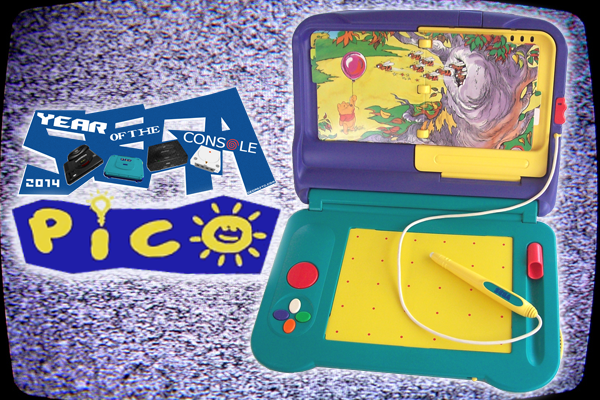
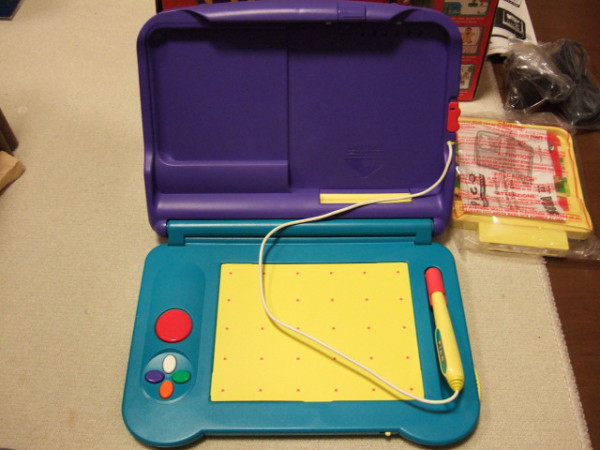
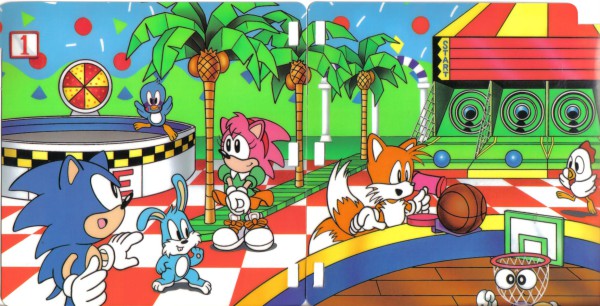
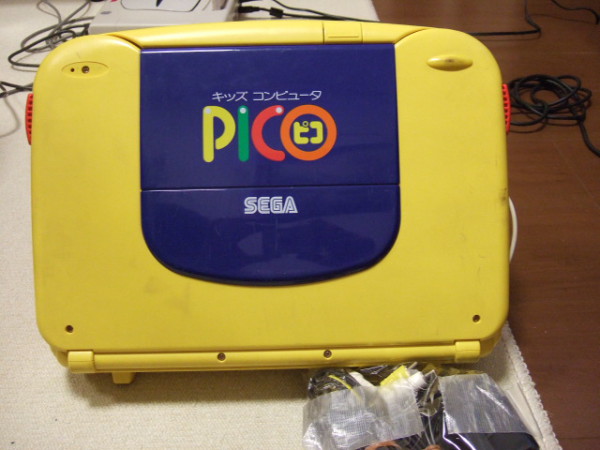

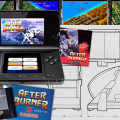

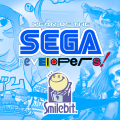
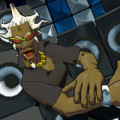
Great article, Sega’s arcade hardware could be covered also by extension or separate to this series some time maybe? Yes they’re not exactly Sega ‘home’ consoles and more like Sega Arcade consoles but technically it’s still Sega hardware and Sega does still produce it’s own boards – making Sega still technically a hardware producing company by definition.
Thank you! And yes, one of our ideas is to shine the spotlight on the various arcade hardware including those that preceded the Dreamcast to prove to people that SEGA hardware is still out there, you just have to leave your home to play them.
Quite Interesting, I don’t remember reading about the Sega Pico before.
We were given one of these but it does not have all the hardware. It is only the case and the stylus. Could you tell me what should have come with the case and if it is still available?
You would need an AC adaptor and a video cable, as well as software. Software can be found easily on ebay, video cables are your basic RCA cables and the AC adaptor should be a SEGA model MK-2103 or MK-1636. Any other SEGA AC adaptors might not work or could fry the Pico.
Here is more info on the AC adaptor: http://segaretro.org/AC_adaptor#MK-1636
I have noticed you don’t monetize your site, don’t waste your traffic, you
can earn additional bucks every month because you’ve got high quality content.
If you want to know how to make extra money, search for: Ercannou’s essential adsense alternative